TEMPERS ARE FLARING ONCE AGAIN, with all manner of charges and accusations flying, as Ferndale residents debate the pros and cons of the proposed new parking/mixed-used structure for the corner of Allen and Troy. Below, we present two-and-a-half perspectives with the hopes of sorting out a little bit of the fact and fiction:
By Clint Hubbell
MY NAME IS CLINT HUBBELL, AND I AM A HOMEOWNER IN FERNDALE. People love to be in Ferndale. They love the energy, they love the diversity, and they which is why it’s fun to be here.
There is an issue with everyone wanting to be here, though: Parking. As optimistic as I am about public transit, including the SMART system, the potential for light rail making its way up Wood-ward Avenue into Ferndale and beyond, and our fantastic new bike-friendly attitude, the fact remains that for shoppers, entertainment-seekers, eaters and drinkers and learners, the primary mode of transportation is the car. I love our walk-able city — I live within walking distance  of our downtown, and we take advantage of it. We love to bike and, having lived in Seattle and Chicago, I know the true value and power of robust public transit.
of our downtown, and we take advantage of it. We love to bike and, having lived in Seattle and Chicago, I know the true value and power of robust public transit.
But what if you don’t live within walking or biking distance, and you want to be here? The bus?Sure, you can take the bus. But by-and-large, the option is the car. Cars give a flexibility that people value — they come and go at the driver’s whim, which means they fit the driver’s need whether that need is a ten-minute shopping trip or a two-hour dinner. Until that reality is cured by a serious investment in public transportation, the car will remain the primary mode of transportation in and out of Ferndale for out-of-towners who want to be here. And it shows. Although admittedly anecdotal, anyone who wants to come down-town in a car on Saturday knows that is always a losing proposition, and many people who want to spend their money here end up going elsewhere. The city’s natural reaction is to balance additional parking for cars and catering to the car culture on one hand with making our city livable, workable, and playable on the other.
The result: A “mixed-use” parking/commercial/residential development. But problems come when we try to be everything to everyone. Here are what I see as the cons to the pro-posed mixed-use development currently being advanced by the City of Ferndale for the Lot 6 location at W. Troy St. and Allen Road, where there is an existing street-level parking lot operated by the City:
• The Mixed-Use Development is Expensive. The City anticipates issuing bonds in the amount of 15 million dollars to cover the costs involved with the project. The current mixed-use plan involves a cast-in-place structure with footings sunk far down as 130 feet (because Ferndale is built on a swampy area). Fifteen million dollars is, objectively, a lot of money, and it is guaranteed by Ferndale’s taxpayers, in spite of the City’s best intentions of repaying the bonds with fees gathered from the parking system. This is putting a lot of Ferndale’s financial eggs in one parking basket.
• People Don’t Want to Walk or Bike for five Months of the Year in Michigan. Let’s face it: from November to March, people want to drive into a snow-plowed lot, do their business, get back in their car and go home — usually with as little time spent outside as possible. They don’t care about walk-ability, bike-ability, or atmosphere when there is a foot of snow on the ground. Mostly, people are doing what they can to keep it together until the sun emerges once again. The atmosphere generated by a fancy parking development won’t matter.
• The Mixed Use Development Creates a Long-Term Parking Solution at the Expense of the Short-Term/drop-off and pick-up user. There are only going to be a very small number of spaces on the first floor of the mixed-use structure, adding parking time, and walking time in and out of the lot. Also, as it is, there is only one proposed entrance/exit from the mixed-use structure. While the City assures us that this will not cause an increase in traffic on W. Troy, there is a natural bottleneck that occurs when there is only one way in and out of the structure.
• The Public/Private Partnership May Create Unnecessary Entanglements. Aside from the City getting its information from the firms who stand to benefit financially from a relationship with the City, one idea for the mixed-use development is to derive rents from first floor commercial spaces and possibly property tax revenue from residential units, and from possible high-end commercial or residential space above the top level of the parking structure. Who’s the management company?
Who’s going to lease the commercial spaces when there are no chain-stores or liquor licenses permitted? This revenue stream is less than clear.
• There is No Meaningful Parking Mitigation Plan. The City projects that “Phase 1” of the mixed-use development will take between 12 and 15 months to complete. This means that for as many as 15 months the shoppers and business owners will not have the benefit of the 130+ spots in Lot 6. The simple fact is that the City does not know what to tell the folks who want to come and spend their money, drop off and pick up their children, eat breakfast, grab lunch, have a beer, munch on a cupcake, or pick up some take-out. There are plans, but the plans put peoples cars far away from businesses and are not well-conceived.
• Does not keep the character of Ferndale. In spite of the best intentions of the City to keep this project in tune with Ferndale’s vibe, the proposal for a transfer floor on the fourth floor of this structure leaves the option open to use the space above the fourth floor, potentially to five or six stories, directly adjacent to a residential neighbor-hood and single or two-story commercial spaces between Troy and 9 Mile Rd. There is nothing, except for the Ferndale Center Building or Credit Union One that rivals that height. Also, the generic mod architecture does nothing to maintain our funky rep; it makes us look like everyone else.
There are many more problems with the mixed-use proposal. There is an alternative, however, which is a precast structure that addresses many of the concerns above.
• Less Expensive. The precast, single-use, parking structure is less expensive because the construction is largely prefabricated. It is unclear how much less, but the City of Rochester, for example, added about 550 spots for approximately $12 million dollars in 2015-16.
(www.detroitnews.com/story/news/local/oakland/county/2015/01/18/rochester-parking-plan/21953215/) By contrast, the proposed mixed-use plan nets only about 200 additional spots at an estimated cost of $15 million.
• Accessibility in the Winter. The precast, single-use, parking structure gives people an easy-in-easy-out option for patronizing local businesses, eliminating walking around a first floor of commercial space or taking an elevator to get to the 9 Mile businesses.
In addition to being less expensive and easier to use, a single-use structure means that the City doesn’t need to be a landlord, won’t need a management company taking a cut of the revenue received from renters, can continue (but not expand) relationships with its existing parking vendor, and doesn’t need to worry about contracts for air rights and residential units.
Because of the issues with a mixed-use development and the simplicity offered by a single-use pre-cast parking structure, I favor the latter, leaving the “space-making” developments for other projects better suited for space-making.
Name Withheld
FERNDALE HAS THE CHANCE TO TAKE A BOLD STEP IN THE RIGHT DIRECTION — by building a sorely needed parking deck that would help alleviate our city’s parking crunch in a way that enhances the vibrancy of downtown. The proposed four-story garage would create nearly 400 parking spaces out of a parking lot that now holds 139. It would feature ground-floor retail and office space, a design that would expand the city’s tax base, make the deck more financially viable and add to the street life that Ferndale has worked so hard to nurture over the years.
It also would come with green-space buffers and walls to minimize the impact on homeowners immediately adjacent to the structure. And it would be paid for not with taxes, but with revenue from the city’s parking system.
What’s not to like about it? You would have thought the idea would have brought the end of downtown Ferndale, the way opponents lashed out at it, creating a petition and hiring a professional company to gather signatures to put the issue to a city-wide vote. To this day, the business owner who financed the canvassing hasn’t identified himself or herself publicly, but the professional signature gatherers told residents that signing the petition was “to support the parking deck” or to force a choice between the four-story deck or a smaller, three-story deck with no first-floor commercial space. I heard from at least a dozen people who, they were embarrassed to admit, had signed the petition not realizing what it would do.
The canvassers didn’t tell the truth: that the city-wide vote only would have been on whether to allow the city to seek bonds to pay for a parking deck; there was no choice between one or another, and rejecting the bond issue would have meant starting over at square one. I can’t count how many times the city has had to do that in the nearly 20 years I’ve lived in Ferndale. Other residents and I co-founded the Support the Ferndale Parking Deck page on Facebook to fight back and interject some truth into the debate to counter the misinformation opponents were spreading.
They claimed:
• Taxpayers would be on the hook for $20 million in bonds for the deck. Well, sure, in the same way a bank is on the hook for a home mortgage. The $20 million figure, it should be noted, is the maximum the city could seek in bonds to build the deck, which likely would cost several million dollars less than that. The bonds would be repaid not by taxes, on property or otherwise, but by revenue from parking fees and violations. Ferndale now brings in about $1 million a year from its parking system, a figure expected to grow once the deck is built. And it’s quite reasonable to assume that parking revenue will remain steady, short of some catastrophic event that stops people from visiting downtown and paying to park.
• The four-story deck would take up to two years to build, while a parking-only, three-story deck would only take six months. Both claims were untrue. Expert construction projections are that the four-story deck would take 12-15 months to complete, with parking available in as little as 11 months, while a three-story deck would take 9-12 months. The reason is that no matter which deck is built, construction requires excavating to reach bed-rock that supports the weight of the deck — about 130 feet deep in Ferndale — adding months to construction.
• The City would become a “landlord” for the commercial space in the deck. Again, untrue. “The City has no intention of becoming a landlord,” Assistant City Manager Joe Gacioch, who is spearheading the project, told me. He said the city might sell the commercial space to a private comp-any or pursue options including a long-term lease with a property management company or a public-private partnership. In that case, primary day-to-day management of the commercial space would be up to the private sector, although the city would retain say in what sorts of businesses could locate there to make sure they fit in with the city’s vision for downtown.
There were more claims, and I could go on, but at this point we are all better off coming together to determine as a community how to best build this parking deck and to minimize the impact construction will have on downtown businesses.
There will be disruption, no doubt. I hope residents hold city officials to their pledges to do as much as they can to minimize the harm to down-town businesses by providing shuttles for workers, free valet service for customers and a well-publicized campaign to remind visitors that downtown Ferndale will be open for business throughout.
What we’ll get in return is a parking deck that will make it easier for the residents and visitors who love our downtown to be able to find a parking space when they get there— instead of driving in circles endlessly looking for a spot, or avoiding going there altogether.
By stephanie loveless
APPARENTLY, MANY OF YOU ARE HAVING A PARKING PROBLEM. I am sorry to hear it. I have lived in Ferndale for 33 years, and never once had a parking problem – there has always been a handy tree or signpost to lock my bike.
Out of every 100 days, there are generally one or two when the weather is bad enough to feel sorry for 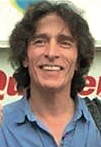 myself, on the bike. But most of the time, I feel sorry for what you are missing! It’s a whole different world, living at 12-miles-per-hour, and you might really love it.
myself, on the bike. But most of the time, I feel sorry for what you are missing! It’s a whole different world, living at 12-miles-per-hour, and you might really love it.
People have been trying to build this damn parking structure here in Ferndale for as long as I can remember, and it looks like they are going to get it this time. But I want you to know that lots of us have given a big cheer every time these plans have gone unfulfilled. I want to speak up for those of us who hate the thought of ANY kind of immense cement structure dominating our beloved home town! We like Ferndale just the way it is, and the less you change the better. How many others feel the same? We’ll never know, and it would have been better to put the matter to a vote. If this thing goes badly, the people who resisted a vote will take a lot of heat for it.
There are plenty of cement mountains to the south of us, and to the north, east and west. We came to Ferndale because we love our small-town lifestyle in the greater metropolitan setting. We’ve really enjoyed the last 20 years while this whole parking structure debacle has remained nothing more than a debate over blueprints.
I guess it’s coming this time, though! That’s okay. This is your town too. Just please understand that we’re not in love with the idea of having our paradise paved over just so you can have another place to park your car.
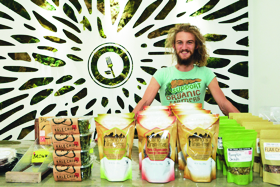 meal options including foods from various ethnic backgrounds and dietary restrictions. We cater to individuals who want to meet their goals and at the same time, offer a variety of meals that will accommodate their taste palate. The city of Ferndale is a direct reflection of that. We at Clean Plates believe our menu and motto replicates the demographics of Ferndale—multiplicity and full of energy.”
meal options including foods from various ethnic backgrounds and dietary restrictions. We cater to individuals who want to meet their goals and at the same time, offer a variety of meals that will accommodate their taste palate. The city of Ferndale is a direct reflection of that. We at Clean Plates believe our menu and motto replicates the demographics of Ferndale—multiplicity and full of energy.”
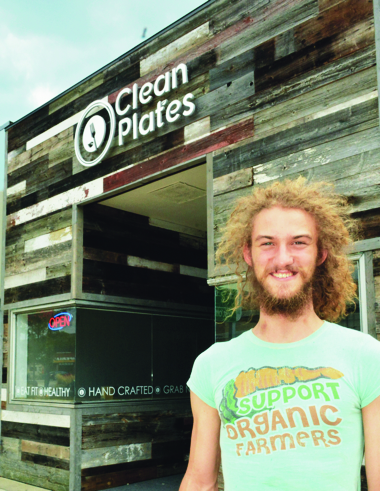
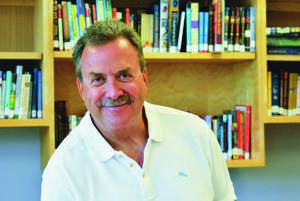
 udents in Detroit public schools since 2002. Jack and Annette are also the driving force behind the younger program, The Ferndale Literacy Project, in Ferndale High School.
udents in Detroit public schools since 2002. Jack and Annette are also the driving force behind the younger program, The Ferndale Literacy Project, in Ferndale High School.
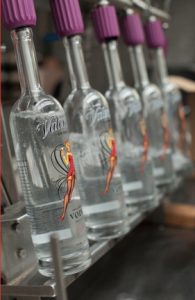 DRIVE TO PROVE THAT THE MIDWEST CAN GENERATE THE BEST LIQUOR IN THE WORLD.
DRIVE TO PROVE THAT THE MIDWEST CAN GENERATE THE BEST LIQUOR IN THE WORLD.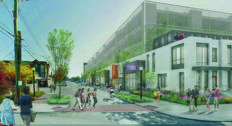
 of our downtown, and we take advantage of it. We love to bike and, having lived in Seattle and Chicago, I know the true value and power of robust public transit.
of our downtown, and we take advantage of it. We love to bike and, having lived in Seattle and Chicago, I know the true value and power of robust public transit. myself, on the bike. But most of the time, I feel sorry for what you are missing! It’s a whole different world, living at 12-miles-per-hour, and you might really love it.
myself, on the bike. But most of the time, I feel sorry for what you are missing! It’s a whole different world, living at 12-miles-per-hour, and you might really love it.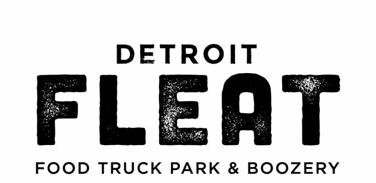
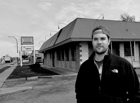 Truck and Catering, and the driving force behind Detroit Fleat. Tye said construction started “the day we closed on the property,” back in February of 2017.
Truck and Catering, and the driving force behind Detroit Fleat. Tye said construction started “the day we closed on the property,” back in February of 2017.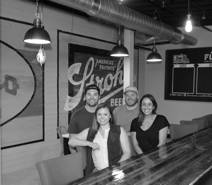 what they do best. Rarely do you find a restaurant that specializes at everything on their menu. But you are able to do that by having multiple food trucks. Tacos, BBQ, comfort food, Mediterranean, burgers are just a few menu items that you will see between the trucks at Detroit Fleat.”
what they do best. Rarely do you find a restaurant that specializes at everything on their menu. But you are able to do that by having multiple food trucks. Tacos, BBQ, comfort food, Mediterranean, burgers are just a few menu items that you will see between the trucks at Detroit Fleat.”
 Just before going to press, project organizer Michelle Mirowski announced that they are working out the final details with the City. Our fingers are crossed…
Just before going to press, project organizer Michelle Mirowski announced that they are working out the final details with the City. Our fingers are crossed…
 helped when he and Rebecca opened Fern and Dale’s. Bredow is excited to see his wife back in the salon business, which she left to raise their two kids, now nine and six. They struggled through financially tough times. The struggle was “humbling and motivating.” When a big-money offer to work for someone else came along, Rebecca told him to hold out, don’t take the money so you can end up making somebody else’s dream come true. Finally, things clicked with PBS and Start Up. Now, both pursue their projects and love their life in Ferndale.
helped when he and Rebecca opened Fern and Dale’s. Bredow is excited to see his wife back in the salon business, which she left to raise their two kids, now nine and six. They struggled through financially tough times. The struggle was “humbling and motivating.” When a big-money offer to work for someone else came along, Rebecca told him to hold out, don’t take the money so you can end up making somebody else’s dream come true. Finally, things clicked with PBS and Start Up. Now, both pursue their projects and love their life in Ferndale.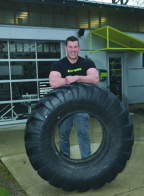

 And when that job was turned into an illegal drug-dealer, all the good bartenders either quit or left the country. Then, when Prohibition was over, they were having fun living abroad, none of them came back. The ones who had quit had been too old. So there was no continuation of this job of bartender as apprentice and professional.”
And when that job was turned into an illegal drug-dealer, all the good bartenders either quit or left the country. Then, when Prohibition was over, they were having fun living abroad, none of them came back. The ones who had quit had been too old. So there was no continuation of this job of bartender as apprentice and professional.”
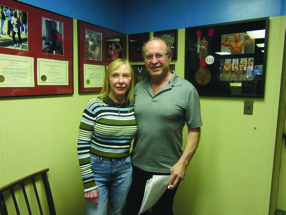 fitness studio 359 Fit on Livernois in Ferndale. The Ulches are devoted to being physically active and living a healthy lifestyle.
fitness studio 359 Fit on Livernois in Ferndale. The Ulches are devoted to being physically active and living a healthy lifestyle.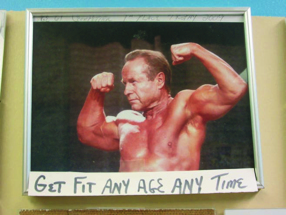 staggering number out of the Mayo Clinic: Seventy per cent of all death-related diseases are preventable,” Terry quotes. The Ulches urge people to not wait for bad health signs to start being physically active. “You lose ten per cent of your muscle each decade of your life. You’re losing so much muscle mass and your fat muscle proportion is changing. So in order to maintain the muscle mass you’re God-given when you’re young, you have to work harder,” Diane says.
staggering number out of the Mayo Clinic: Seventy per cent of all death-related diseases are preventable,” Terry quotes. The Ulches urge people to not wait for bad health signs to start being physically active. “You lose ten per cent of your muscle each decade of your life. You’re losing so much muscle mass and your fat muscle proportion is changing. So in order to maintain the muscle mass you’re God-given when you’re young, you have to work harder,” Diane says.